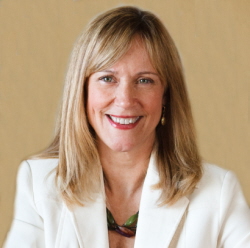Social selling is no longer optional for salespeople. The good news is it’s all about doing research and building relationships—and you already know how to do that.
My colleague, Nancy Nardin, knows about every sales tool there is. However, as she once told me, “Unless a tool increases productivity, it’s a waste of time.” Great advice!
Nancy understands that social-selling tools can’t replace personal conversations. While social selling can plant the seed for a relationship, it’s the personal interactions that ultimately seal the deal.
In this month’s guest blog, she shares her thoughts on the matter:
“What’s all the hubbub about ‘social selling?’ After all, selling has never been anything other than ‘social.’ Sellers have, for the most part, relied on networking, referrals, and rapport as means to develop relationships—or, at the very least, to gain the credibility and trust needed to get an appointment.
What has changed, however, is the scale.
A Wealth of Opportunities
LinkedIn has greatly increased our ability to stay connected to former colleagues and friends, while expanding our networks to include others with shared connections and interests. But although LinkedIn is one of the best tools for professional networking, social selling isn’t just about using social networks effectively.
Social selling is a way to discover, engage, and interact with potential prospects. Sellers now have more opportunities to accomplish all three of these goals—with more prospects than we dared dream of in the past.
Prospects also have the opportunity to find us like never before. They can easily access information about us, our companies, and our products. They can also learn what their friends and co-workers, or even strangers, think of us.
Too Much of a Good Thing?
Social selling is no longer optional for salespeople, nor is it a waste of time. Prospects expect you to have done your research so that you can make your interactions targeted and relevant. They also want you to know what they do, who they compete against, and what’s important to them.
However, the scale—both in terms of the amount of people sellers and buyers can interact with, as well as the information they can discover and access—is staggering. Factor in what many consider to be more B2C platforms like Twitter, Facebook, Pinterest, and Instagram, and you can quickly become mired down by too much of a ‘good’ thing.
Social selling can suck the life out of your selling efforts—if you let it. The key is to do it strategically and use smart tools. It’s imperative that you don’t drop ‘selling’ from the phrase ‘social selling.’ You’re not doing this to make buddies. You’re doing it to better serve prospects and to earn their business before your competitors can.
Getting Personal
Likewise, don’t forget what ‘social’ is all about. Social is personal. Prospects demand and deserve personalized attention. That means sellers can no longer get by with a dialer and a list. Listen to and learn about your prospects. Use the vast resources of the Web, and make sure they can find and learn about you.
Most importantly, remember that online interactions do not replace real-life, off-line conversations. After all, getting to have quality off-line conversations is the goal of social selling.
Comment Here
How have you used social-selling tools to get meetings at the level that counts? What social-selling strategies have (and have not) worked for you?
 Nancy Nardin is the foremost expert on sales-productivity tools. As President of Smart Selling Tools, she consults with many of the top sales-productivity software vendors as well as end-user organizations looking to select the right tools. Click to get Nancy’s What & When weekly digest with invitations to complimentary webinars and informative publications. Follow Nancy on Twitter @sellingtools or subscribe to her Sales Productivity blog. Nancy can be reached at 916-596-3035. To schedule a free 30-minute consultation, click here.
Nancy Nardin is the foremost expert on sales-productivity tools. As President of Smart Selling Tools, she consults with many of the top sales-productivity software vendors as well as end-user organizations looking to select the right tools. Click to get Nancy’s What & When weekly digest with invitations to complimentary webinars and informative publications. Follow Nancy on Twitter @sellingtools or subscribe to her Sales Productivity blog. Nancy can be reached at 916-596-3035. To schedule a free 30-minute consultation, click here.


Social selling tools are great!
When used correctly, they can
Really improve a business.
So many great points in this article, Nancy. I am encouraging print salespeople to embrace the power of LinkedIn. So many don’t even have their photos and contact info! It’s so important to connect to their clients and prospects and pay attention to what people are talking about.